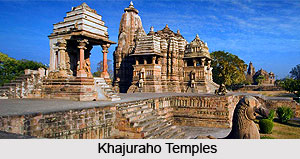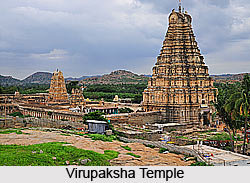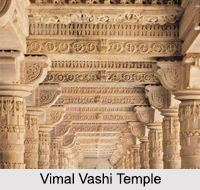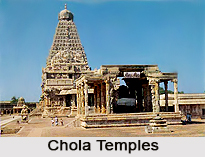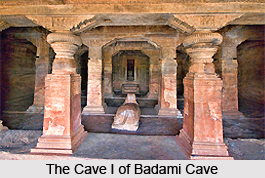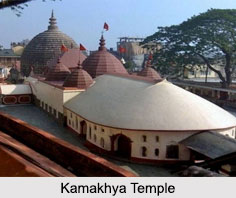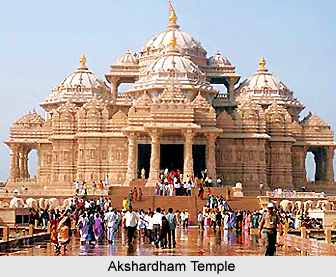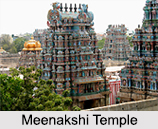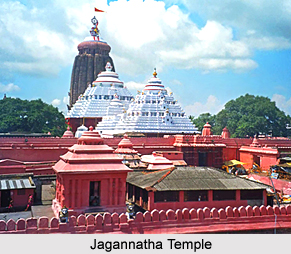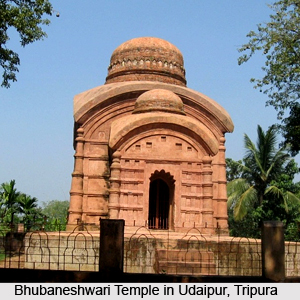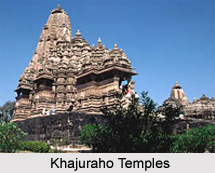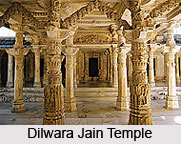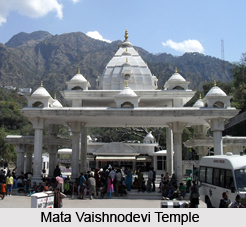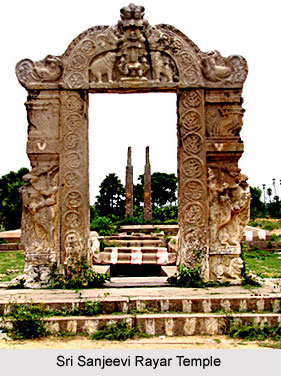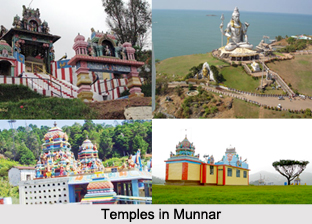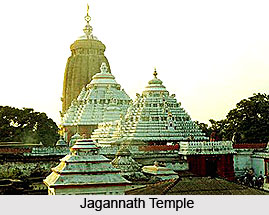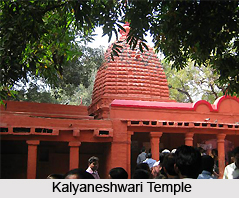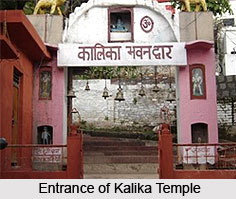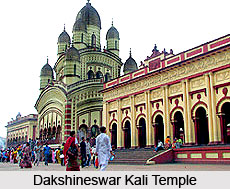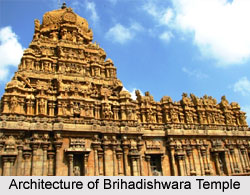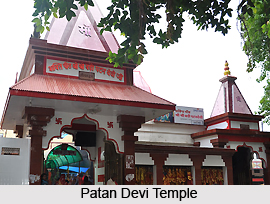 Patan Devi temple is regarded as one of the 51 Siddha Shakti Peethas in India. According to legends, the right thigh of the corpse of Sati had fallen here when it was chopped off by Lord Vishnu with his `Sudarshan Chakra`. The ancient temple is believed to be the abode of the goddess Durga.
Patan Devi temple is regarded as one of the 51 Siddha Shakti Peethas in India. According to legends, the right thigh of the corpse of Sati had fallen here when it was chopped off by Lord Vishnu with his `Sudarshan Chakra`. The ancient temple is believed to be the abode of the goddess Durga.
Once Prajapati Daksha had performed Brihaspati Yajna and had invited every one except Lord Shiva, his own son-in-law. When Sati came to know that her husband had not been invited to her father`s Yajna she mortified and put an end to her life. Lord Shiva in great anger and grief took her dead body on his shoulder and began to perform Tandava dance round the three worlds. The Gods requested Lord Vishnu to do something. Vishnu followed the dancing Shiva and started cutting the dead body of Sati to pieces with his Chakra. Wherever the major limbs of the body of Sati fell the places became Mahapeethas. The places where the minor limbs fell came to be known as Upapeethas.
According to the Hindu mythology, the right thigh of Devi Sati fell in Magadha and it is said that the part of the body of Sati fell in both Maharajganj and Chowk areas in Old Patna city. At these sites the Badi Patan Devi temple and the Chhoti Patan Devi temple were built.
Bari Patan Devi
The Bari Patan Devi Temple of Patna is facing the North, towards Ganga River. The statues of the temple are made of black stone. Devotees can visit the temple at any time of the day. People of any caste can come and worship in this temple.
Chhoti Patan Devi
Chhoti Patan Devi temple is situated in the Chowk area of Patna City and was considered as the main presiding deity of Patna. The temple has several intact and severed Brahmanical images that include images of Lord Ganesh, Lord Vishnu and Lord Surya.
During Vijaydashmi a fair is also held near the temple. People also offer special pujas on Saptami, Ashtami and Navami. The fair conjures the congregation of the religious pursuits with the merriment enforcements.
